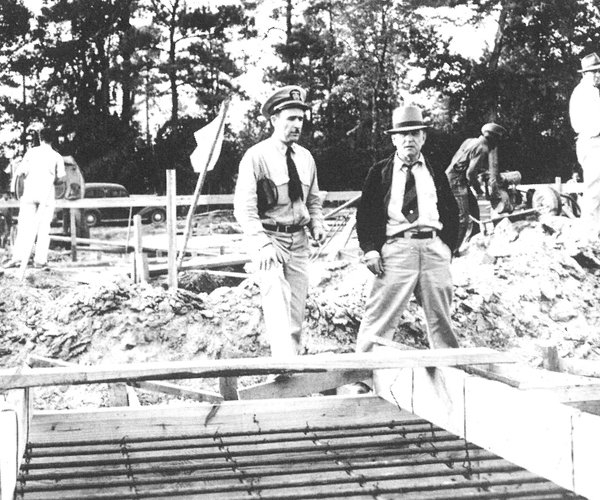1524
European contact during the exploring voyage of Giovanni da Verrazzano.
1704
The Naval Store Act of 1704.
1720
Carolina began to lead the world in naval stores production for the next 150 years.
1728
Ennett’s Ferry (now Snead’s Ferry) began operating on the New River.
1729
North and South Carolina become royal colonies.
1731
Formation of Onslow County.
1737
A new courthouse, along with a prison, stocks, and a whipping post, was constructed at what is now Paradise Point (also in present-day Camp Lejeune).
1741
Johnstown, the Precinct’s first county seat, was established on Mittum’s Point, New River (now Town Point).
1764
Milling started to become the principal manufacturing industry in the region.
1776
An estimated 1,400 people lived in the county.
February 1776
The Battle of Moore’s Creek Bridge took place during the Revolutionary War.
1791
Dr. William J. Montford, Sr. bought what we now know as Mumford’s Mill. Montford Point, where Dr. Montford built his plantation house in the late 1700s, is now the site of Camp Johnson.
1823
Onslow County’s first post office opened.
1850
Onslow County’s first steam-powered sawmill was built by Christopher Coney.
1851
One of the first institutions of public education in Onslow, a female seminary, was constructed in Jacksonville.
1860
There were more than 8,800 residents in Onslow County.
1861
North Carolina seceded from the United States.
1880s
Arrival of the railroad, northern capital—and some from the South—was attracted to Onslow County’s timber resources.
1940
Holly Ridge, which was an insignificant crossroads settlement, became the location of the 3,200-acre Camp Davis.
1941
Throughout 1941 the US Navy conducted appraisals of land and structural property across the area planned for the base, while also documenting and removing hundreds of graves.
February 1941
Camp Lejeune, originally known as Marine Barracks at New River was established.

The Construction Officers inspects the progress of buildings at Marine Barracks New River.
April 1941
Initial construction of Camp Lejeune began.
May 1, 1941
LtCol. William P.T. Hill was ordered to establish and assume command of the base, then known as Marine Barracks New River, N.C.

LtCol W.P.T. Hill, first Commanding Officer of Marine Barracks New River (May – September 1941).
June 1941
The first African American troops arrived to train at the Montford Point area of Camp Lejeune after Franklin D. Roosevelt issued Executive Order 8802.

Sgt. Gilbert “Hashmark” Johnson looking over new recruits at Montford Point, 1943.
September 1941
The 1st Marine Division set up camp in the middle of a sandy pine forest along the Atlantic Seaboard.

The Gurganus Farmhouse, located in the Tent Camp area, was converted for use as the first base headquarters. It was later used as the headquarters for the 1st MarDiv.

November 1941 land clearing activities in the area of the “airport,” Peterfield Point.

December 1941 image of an African American cemetery located within the periphery of the Marine Barracks. Several such cemeteries existed in the area at the time of the base’s construction. Some graves were moved, while others, such as the Verona Loop Cemetery, were left in situ.
1942
Near the end of 1942, the base took on the name of Camp Lejeune, named in honor of the 13th Commandant and Commanding General of the 2d Army Division in World War I, MajGen. John A. Lejeune.

General John A. Lejeune
1943
Women were trained at the base in nearly all facets of the military (except fighting).

In 1944, Marine Congresswoman Margaret Chase Smith, then the only woman member of the House Naval Affairs Committee, visited the Women Reserves at New River.